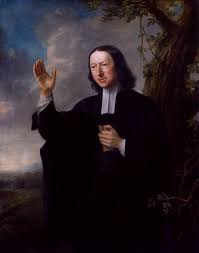ibraltar today is a famous British Overseas Territory, which is located at the southern tip of the Iberian Peninsula, with Spain bordering it to the north.
Anglo-Dutch forces captured Gibraltar from Spain in 1704, during the War of the Spanish Succession. It was then ceded to Britain in perpetuity under the Treaty of Utrecht in 1713.
Following this, “the Rock” became an important base for the Royal Navy. This was particularly apparent during the Napoleonic Wars and in the Second World War. Its strategic significance is due to the fact that it controls the narrow entrance and exit to the Mediterranean Sea: the Strait of Gibraltar. This is a mere 8.9 miles (14.3 km) wide.
The sovereignty of Gibraltar is an ongoing area of friction in Anglo-Spanish relations, as Spain asserts a claim to the territory. This situation has become more difficult as a consequence of Brexit – but that is another story. The friction that is the subject of this column is older than that and involves the treatment of early Methodist soldiers, who were stationed at Gibraltar.
The origins of Methodism in Gibraltar
The Methodist Church in Gibraltar was founded by a group of “soldier preachers” in the early months of 1769. The first permanent Methodist meeting place on “the Rock” was in the home of Sergeant (later Sergeant Major) Henry Ince of the 2nd (The Queen’s Royal) Regiment of Foot.
He had heard John Wesley speak in Ireland and he was a Methodist preacher (what would later be termed a “Methodist Local Preacher”) but not a member of the ordained clergy.
Ince was to become famous for his work on the Upper Galleries of Gibraltar during the Great Siege of 1779–83 (when Spain and France unsuccessfully tried to capture Gibraltar from the British during the American Revolution).
In the beginning, Ince – supported by Private W. Morton of the 2nd Regiment and Sergeant Henry Hall of the Royal Scots – met with the approval and protection of Lord Edward Cornwallis, the Governor of Gibraltar.
Cornwallis signed a Garrison Order in June 1769, which declared: “Whereas divers soldiers and inhabitants assemble themselves every evening to prayer, it is the governor’s positive order that no person whatever presume to molest them, nor go into their meeting to behave indecently there.”
It was a surprisingly sympathetic approach, although its last injunction hinted that there were those who were inclined to “molest” the Methodists and disrupt their meetings “indecently.”
A soldier’s letter home – written in November 1769 and quoted in a mid-nineteenth-century history of the Wesleyan Methodists – recorded that:
We have between thirty and forty joined in the Society from the different regiments, besides some townsfolk and one officer. We have preaching every night and morning. We have three nights of the week set apart for class-meeting after the sermon, and on the Sabbath day at eight in the morning, two in the afternoon, and six in the evening.
It was clearly a highly dedicated little fellowship. However, not everyone was pleased to see the spread of Methodism. The objections to Methodist activity were rooted in the fact that it occurred outside the parochial structure of the Church of England. This put these growing Methodist “societies” outside the control of local parish vicars.
John Wesley (1703–91) urged Methodist converts to still attend the local parish church and to receive Holy Communion there. Indeed, he himself died as an Anglican and saw his movement as aiming to bring about evangelical revival from within the Church of England.
It was not to be. The point of no return was when Methodist societies in both North America and the British Isles determined to have their own people ordained to lead them and administer their own sacraments. This process was accelerated by determined resistance to Methodism from within the Anglican Church and sanctions increasingly being applied to individual Methodists, particularly those who put their head above the parapet. That military metaphor brings us back to the garrison at Gibraltar.
The persecution of the Methodist soldiers of Gibraltar
In 1792 a group of soldiers began meeting under the leadership of another member of the military, Andrew Armour. The Methodists had a reputation for upright moral behaviour and their opposition to drunkenness. When a later governor, General O’Hara (as reported in the Methodist Magazine of 1802) was asked to put a stop to the Methodist meetings, he replied: “Let them alone; I wish there were twenty for one of them, and we should have fewer court-martials in the Garrison than we have.”
Despite this, long-standing opposition from some within the military authorities came to a head in 1802, when Governor O’Hara died and was succeeded by HRH Edward, Duke of Kent. This change of overall command was taken as an opportunity to persecute the Methodist solders by the garrison chaplain and Lieutenant-Colonel Ramsay of the 2nd Regiment. Incidentally, this regiment is the oldest English line Infantry Regiment in the British Army. But in 1803 its commander turned on the Methodist members of this historic unit.
This persecution started with a ban on soldiers attending Methodist meetings or preaching to others. When believers continued to meet for fellowship, this led to five court martials. The five arrested were Corporals James Lamb and Richard Russell and Privates James Hampton, John Reeves and John Fluccard, one of whom was only fourteen years of age.
Of the five, Corporals Lamb and Russell were reduced to the ranks, and all were sentenced to five hundred lashes each. Lamb and Russell received two hundred lashes that evening. The rest of the sentences were suspended; but were to be carried out if they attended another Methodist meeting.
In addition, Lieutenant-Colonel Ramsay was reported to have gone to the guardhouse before the trial and to have told the corporals that “he certainly would flog them.” Clearly, they had been found guilty even before the trial had begun.
The persecution ended the next year, with the appointment of a new governor, but it was a shocking insight into an alliance between some of the elites within the established church and military, in response to men whose offence was primarily that they acted outside the established church and felt empowered to preach the gospel to their fellow soldiers. All the while accompanied by moral uprightness and opposition to drunkenness!
Although the Duke of Wellington was not implicated in any of the persecution of Methodists in Gibraltar, it should be noted that this conservative aristocrat was not pleased to find overly-recognisable Methodist activity within his regiments during the Peninsular War, against the French in Portugal and Spain. However, it was not their meetings which troubled the duke, it was their enthusiasm. He was particularly irked when Methodist soldier-preachers targeted officers with moralising sermons!
The Gibraltar fellowship survives
Despite the difficulties, the Methodist community grew, and the Methodist Conference (the church’s organising centre) decided to support the work in Gibraltar by providing missionary ministers. So it was that, in 1804, the first Methodist minister was appointed, and was charged with the care of both military and civilian members of the Methodist society there.
However, that same year this first minister, James M’Mullen, and his wife, both died of yellow fever within a month of arrival (leaving a young daughter).
A second minister, the Rev. William Griffith senior, arrived in 1808 and built the first Methodist church in Gibraltar in 1809. This was in Prince Edward’s Road, on the site of Sergeant Major Ince’s earlier army quarter. Later, a manse and a charity school were added to the suite of premises.
The work continued to be arduous. Repeated outbreaks of yellow fever and of cholera (the latter from the 1830s) adversely impacted on the work of the mission and for many years there was sporadic opposition from the garrison chaplains.
In the 1830s, the Methodist minister, the Rev. Dr. William Harris Rule, during his nine years in Gibraltar (1832–41) championed religious toleration within the military and successfully opposed the ongoing punishment of soldiers for being Methodists. As a result, the War Office accepted the right of Methodist and nonconformist soldiers to attend their own religious services. The situation had come a long way since the floggings of 1803.
The aim of the Methodists in the military was always evangelism. They saw the ministry to soldiers and sailors as being particularly significant because they travelled around the British Empire and took the gospel message with them. As a result, links with the British and Foreign Bible Society had been established since 1807. This was because Bible distribution was regarded as an important means of evangelism.
The mission beyond the military
Alongside work within the regiments of the Gibraltar garrison, the Methodists were also active among the local inhabitants of Gibraltar. In 1824, the Rev. William Barber was appointed as a second missionary, solely to work with them. This work was later developed by the Rev. W. H. Rule who founded the first Mission schools in Gibraltar. However, these activities led to considerable opposition from some members of the Roman Catholic population.
In the 1830s, Rev Rule also attempted to establish Methodist missions across the border in Spain, based on Cadiz. This accompanied related work there by the Bible Society. However, the political and religious situation in Spain meant that all were eventually forced to leave the country and they failed to establish a permanent Protestant community in Spain at this time.
On the recommendation of a commission, which was set up in 1996, the Methodist Church in Gibraltar is now a circuit within the South-East District of the British Methodist Church.
Martyn Whittock is an evangelical historian and a Licensed Lay Minister in the Church of England. As the author, or co-author, of fifty-four books, his work covers a wide range of historical and theological themes. In addition, as a commentator and columnist, he has written for several print and online news platforms; has been interviewed on radio news exploring the interaction of faith and politics; appeared on Sky News discussing political events in the USA; and recently has been interviewed regarding the war in Ukraine, including its religious dimensions. His most recent books include: Trump and the Puritans (2020), The Secret History of Soviet Russia’s Police State (2020), Daughters of Eve (2021), Jesus the Unauthorized Biography (2021), The End Times, Again? (2021) and The Story of the Cross (2021). He has just completed Apocalyptic Politics (2022 forthcoming), which examines apocalyptic beliefs driving political radicalization across global cultures. He grew up within Methodism, where he was accredited as a Methodist Local Preacher, the same position held by Sergeant Henry Ince in the 1760s.

